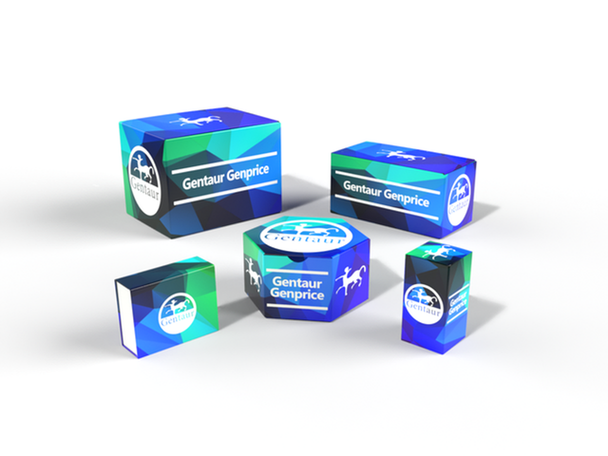Description
CDK7 Antibody | 31-031 | Gentaur UK, US & Europe Distribution
Host: Rabbit
Reactivity: Human
Homology: N/A
Immunogen: Antibody produced in rabbits immunized with a synthetic peptide corresponding a region of human CDK7.
Research Area: Transcription, Cell Cycle, Cancer, Signal Transduction
Tested Application: E, WB, IHC
Application: CDK7 antibody can be used for detection of CDK7 by ELISA at 1:75000. CDK7 antibody can be used for detection of CDK7 by western blot at 1 μg/mL, and HRP conjugated secondary antibody should be diluted 1:50, 000 - 100, 000.
Specificiy: N/A
Positive Control 1: Cat. No. 1205 - Jurkat Cell Lysate
Positive Control 2: N/A
Positive Control 3: N/A
Positive Control 4: N/A
Positive Control 5: N/A
Positive Control 6: N/A
Molecular Weight: 39 kDa
Validation: N/A
Isoform: N/A
Purification: Antibody is purified by Protein A/G affinity chromatography method.
Clonality: Polyclonal
Clone: N/A
Isotype: N/A
Conjugate: Unconjugated
Physical State: Liquid
Buffer: Purified antibody supplied in 1x PBS buffer with 0.09% (w/v) sodium azide and 2% sucrose.
Concentration: batch dependent
Storage Condition: For short periods of storage (days) store at 4˚C. For longer periods of storage, store CDK7 antibody at -20˚C. As with any antibody avoid repeat freeze-thaw cycles.
Alternate Name: CDK7, CAK1, HCAK, MO15, STK1, CDKN7, p39MO15
User Note: Optimal dilutions for each application to be determined by the researcher.
BACKGROUND: Cdk7 is the catalytic subunit of the CDK-activating kinase (CAK) complex, a serine-threonine kinase. CAK activates the cyclin-associated kinases CDC2/CDK1, CDK2, CDK4 and CDK6 by threonine phosphorylation. CAK complexed to the core-TFIIH basal transcription factor activates RNA polymerase II by serine phosphorylation of the repetitive carboxyl-terminus domain (CTD) of its large subunit (POLR2A) , allowing its escape from the promoter and elongation of the transcripts. Cdk7 is involved in cell cycle control and in RNA transcription by RNA polymerase II. Its expression and activity are constant throughout the cell cycle.










